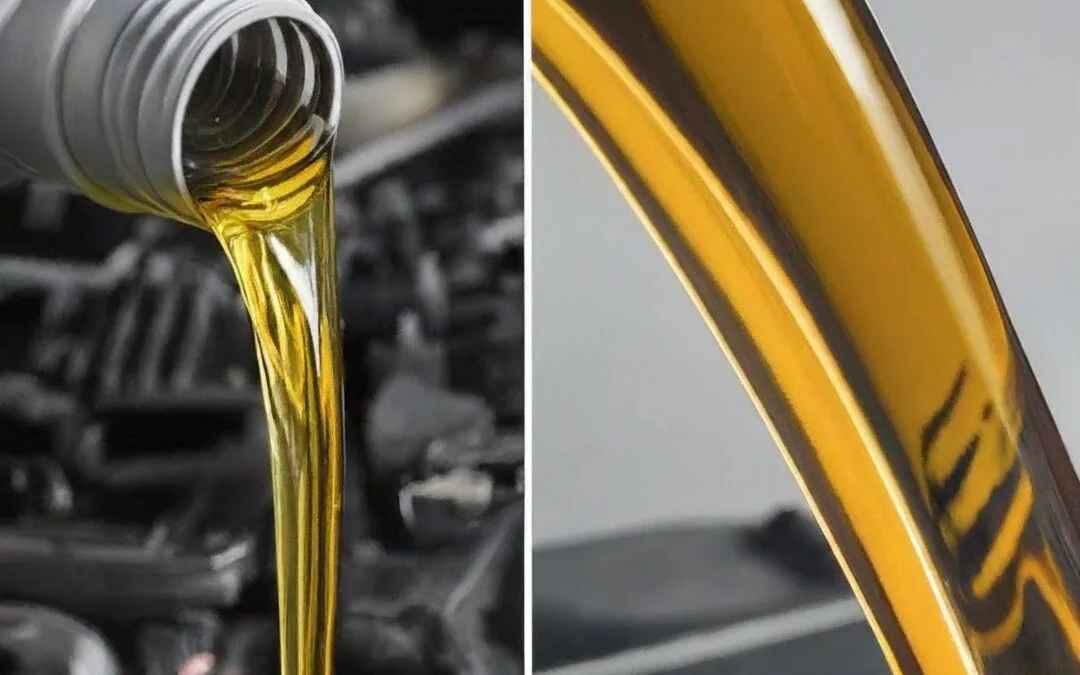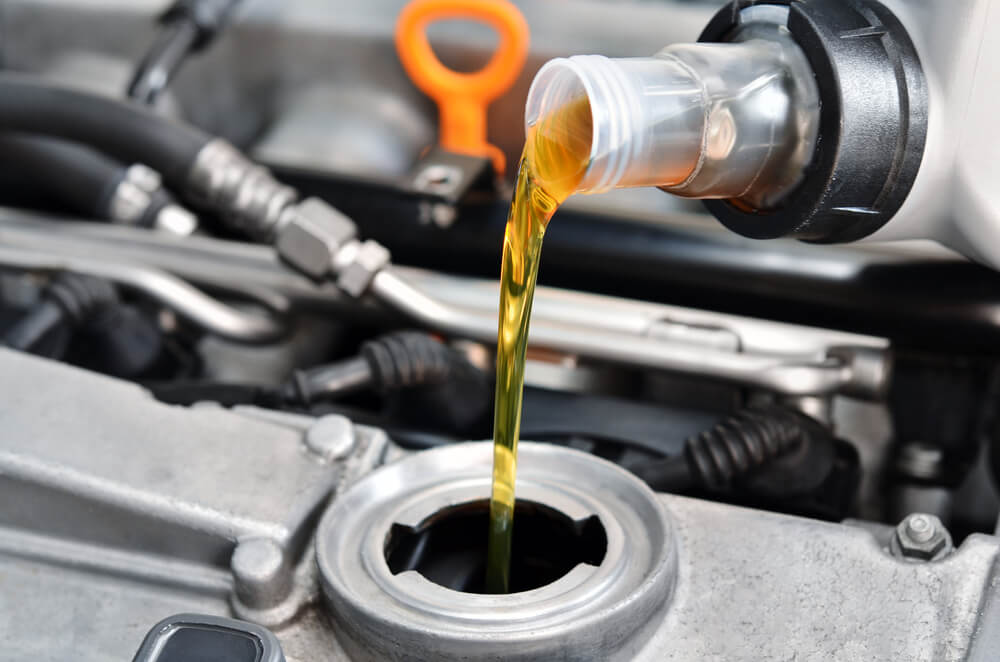Title: Decoding the Appearance of Used Motor Oil: What Should You Look For?
Introduction:
As guardians of our vehicles’ health, one of our primary responsibilities is to ensure the vitality of their lifeblood: motor oil. Used motor oil serves as a silent witness to the inner workings of our engines, bearing the traces of their performance and health. However, deciphering its appearance can often feel like navigating a cryptic language, leaving many motorists puzzled about what they should be looking for.
In this guide, we embark on a journey to demystify the enigmatic world of used motor oil. From its color to its consistency, and even its scent, every aspect holds vital clues about the condition of our engine and the effectiveness of our maintenance practices. By understanding what used motor oil should look like, we empower ourselves to make informed decisions that safeguard the longevity and performance of our vehicles. So, let’s delve into this exploration, equipped with knowledge that will illuminate the path to optimal engine health.
What is used motor oil
Used motor oil, often referred to simply as “engine oil,” is a crucial component in the operation of internal combustion engines. It serves multiple functions, all of which are essential for maintaining engine health and performance.
At its core, used motor oil is a lubricant. Within the intricate machinery of an engine, numerous metal parts move and interact with each other at high speeds and under immense pressure. Without proper lubrication, these parts would quickly wear down, leading to friction, heat buildup, and ultimately, engine failure. Used motor oil forms a protective layer between these components, reducing friction and minimizing wear and tear.
Additionally, motor oil acts as a coolant, helping to dissipate the heat generated by the engine’s operation. As the oil circulates through the engine, it absorbs heat from the combustion process and carries it away, preventing overheating and maintaining optimal operating temperatures. Furthermore, used motor oil plays a crucial role in keeping the engine clean. It picks up dirt, debris, and combustion byproducts as it circulates through the engine, preventing them from accumulating and causing damage. Over time, however, these contaminants can accumulate in the oil, leading to its degradation and necessitating periodic changes
Ideal Characteristics of Used Motor Oil
The ideal characteristics of used motor oil are crucial indicators of engine health and performance. Understanding these characteristics can empower vehicle owners to detect potential issues early and become sure about what should used motor oil look like ensuring optimal engine function and longevity.
- Color: Used motor oil typically ranges from amber to dark brown in color, depending on its age and level of contamination. Fresh oil tends to have a clear, golden hue, while older oil may darken due to the accumulation of combustion byproducts and contaminants. However, significant changes in color, such as a sudden darkening or the presence of metallic flakes, could signal contamination or engine wear, warranting further investigation.
- Consistency: Viscosity, or the thickness of the oil, is a critical characteristic that affects engine lubrication and performance. Used motor oil should maintain its specified viscosity within a certain range, as recommended by the vehicle manufacturer. A significant deviation from this viscosity range may indicate oil degradation or contamination, compromising its ability to lubricate and protect engine components effectively.
- Odor: While motor oil typically has a subtle petroleum odor, certain abnormalities in smell can signify underlying issues. Burnt or acrid odors may indicate overheating or oil breakdown, while a strong gasoline smell could suggest fuel contamination. Unusual or foul odors should prompt immediate attention, as they may signal potentially serious engine problems.
- Clarity: Fresh motor oil is generally transparent or slightly translucent. As it becomes used, the oil may become cloudier due to the presence of suspended particles and contaminants. However, excessive cloudiness or the presence of visible sediment could indicate contamination or the need for an oil change.
- Foam: Under normal conditions, motor oil should not foam excessively during operation. Excessive foaming may indicate the presence of contaminants, air leaks, or issues with the oil’s additives. Monitoring for abnormal foaming can help identify potential problems early and prevent damage to engine components.
By paying attention to these ideal characteristics of used motor oil, vehicle owners can proactively monitor engine health and address any issues before they escalate. Regular oil analysis and maintenance, along with adherence to manufacturer recommendations, are essential practices for ensuring optimal engine performance and longevity.
Common Signs of Degraded or Contaminated Oil
Recognizing common signs of degraded or contaminated oil is crucial for maintaining the health and performance of your vehicle’s engine. Identifying these indicators early can help prevent potential damage and costly repairs down the line.
- Darkened Color: One of the most apparent signs of degraded oil is a darkening in color. Fresh motor oil typically has a clear, amber hue. As it accumulates contaminants and undergoes thermal breakdown from engine heat, the oil darkens to a deep brown or black color. A significant and sudden change in oil coloration may indicate contamination or the need for an oil change.
- Presence of Particles or Sludge: Contaminated oil may contain visible particles or sludge suspended within it. These particles can range from tiny metal shavings to larger debris, depending on the source of contamination. Sludge formation occurs when oil breaks down and combines with contaminants, forming a thick, viscous substance that can obstruct oil flow and impair engine lubrication.
- Unusual Odors: An abnormal or foul odor emanating from the oil dipstick or oil filler cap can signal contamination or degradation. Burnt, acrid smells may indicate overheating or oil breakdown, while a strong gasoline odor could suggest fuel contamination. Paying attention to these odors can help diagnose potential issues with the engine or oil system.
- Foaming or Frothiness: Excessive foaming or frothiness in the oil can indicate the presence of contaminants or air entrainment. While some foaming is normal during engine operation, persistent foaming or foaming that persists after the engine has been turned off may warrant further investigation. Foam can compromise oil circulation and lead to inadequate lubrication of engine components.
- Increased Engine Noise or Performance Issues: Degraded or contaminated oil may fail to provide adequate lubrication, resulting in increased engine noise or performance issues. These symptoms can manifest as knocking or ticking sounds from the engine, reduced power output, or rough idling. If left unaddressed, these issues can escalate, leading to engine damage or failure.
By remaining vigilant for these common signs of degraded or contaminated oil, vehicle owners can take proactive measures to address potential issues and preserve the health and longevity of their engines. Regular oil analysis and timely oil changes are essential maintenance practices that can help mitigate the risk of engine damage and ensure optimal performance.
Factors Affecting the Appearance of Used Motor Oil
Understanding the factors that influence the appearance of used motor oil is essential for accurately interpreting its condition and identifying potential issues with the engine. Several key factors can affect the appearance of motor oil, ranging from environmental conditions to engine operation and maintenance practices.
- Age and Mileage of the Oil: As motor oil ages and accumulates mileage, it undergoes chemical and physical changes that can alter its appearance. Over time, exposure to high temperatures, pressure, and contaminants causes the oil to degrade, darken, and become less effective at lubricating and protecting engine components. Monitoring the age and mileage of the oil can provide valuable insights into its condition and the need for replacement.
- Engine Condition and Maintenance History: The condition of the engine and its maintenance history significantly impact the appearance of used motor oil. Engines that are properly maintained with regular oil changes and proper operating conditions tend to produce cleaner, less contaminated oil. Conversely, engines that are poorly maintained or have underlying mechanical issues may produce oil that is darker, more contaminated, or exhibits abnormal characteristics.
- Environmental Factors and Driving Conditions: Environmental factors and driving conditions can also influence the appearance of used motor oil. Operating an engine in extreme temperatures, such as cold starts or prolonged idling in hot weather, can accelerate oil degradation and contamination. Similarly, driving in dusty or polluted environments can introduce contaminants into the oil, affecting its appearance and performance.
- Oil Additives and Formulation: The formulation of motor oil, including the types and concentrations of additives used, can impact its appearance and performance. High-quality motor oils with robust additive packages are better equipped to withstand the rigors of engine operation and maintain their effectiveness over time. However, even the best oils will degrade and become contaminated with use, necessitating periodic changes.
- Oil Filtration and Circulation: The efficiency of the oil filtration system and the circulation of oil throughout the engine play crucial roles in maintaining oil quality and appearance. A properly functioning oil filter helps remove contaminants and debris from the oil, preventing them from circulating and causing damage to engine components. Inadequate filtration or restricted oil circulation can result in increased contamination and degradation of the oil.
Importance of Regular Oil Checks and Changes
Regular oil checks and changes are critical aspects of vehicle maintenance that directly impact engine performance, longevity, and overall reliability. Understanding the importance of these practices is essential for ensuring the health and efficiency of your vehicle’s engine.
- Lubrication and Wear Prevention: One of the primary functions of motor oil is to lubricate engine components, reducing friction and wear during operation. Over time, oil breaks down and becomes less effective at providing adequate lubrication. Regular oil checks allow you to monitor the condition of the oil and ensure that it remains within the manufacturer’s recommended viscosity range. Timely oil changes prevent excessive wear and prolong the life of critical engine parts, such as pistons, bearings, and camshafts.
- Heat Dissipation and Cooling: In addition to lubrication, motor oil also plays a crucial role in dissipating heat generated by the engine. As oil circulates through the engine, it absorbs heat from combustion and frictional forces, helping to regulate operating temperatures. However, as oil ages and becomes contaminated, its ability to dissipate heat diminishes. Regular oil changes ensure that the engine remains properly cooled, reducing the risk of overheating and potential damage to engine components.
- Contaminant Removal and Engine Cleanliness: Motor oil acts as a cleaning agent, picking up dirt, debris, and combustion byproducts as it circulates through the engine. Over time, these contaminants accumulate in the oil, forming sludge and reducing its effectiveness. Regular oil changes remove old, contaminated oil and replace it with fresh, clean oil, helping to maintain engine cleanliness and prevent the buildup of harmful deposits.
- Optimal Engine Performance and Fuel Efficiency: A well-lubricated engine operates more efficiently, delivering better performance and fuel economy. Dirty or degraded oil can impede engine performance, leading to reduced power output, rough idling, and decreased fuel efficiency. By adhering to a regular oil change schedule, you can ensure that your engine operates at its peak performance, maximizing fuel economy and overall driving experience.
- Preventive Maintenance and Cost Savings: Regular oil checks and changes are essential components of preventive maintenance, helping to identify potential issues before they escalate into costly repairs. Neglecting oil maintenance can lead to premature engine wear, increased fuel consumption, and eventual engine failure. By investing in routine oil changes, you can prolong the life of your engine, reduce the risk of unexpected breakdowns, and save money on costly repairs in the long run.
Tips for Monitoring and Maintaining Motor Oil
Monitoring and maintaining motor oil is essential for ensuring the health and longevity of your vehicle’s engine. By following these tips, you can effectively manage your oil maintenance routine and keep your engine running smoothly:
- Check Oil Levels Regularly: Make it a habit to check your vehicle’s oil levels at least once a month, or before long trips. Park your vehicle on level ground and wait for the engine to cool down before checking the oil dipstick. Ensure that the oil level falls within the designated range on the dipstick to prevent potential engine damage due to low oil levels.
- Follow Manufacturer Recommendations: Refer to your vehicle’s owner’s manual for recommended oil change intervals and specifications. Adhering to the manufacturer’s guidelines ensures optimal engine performance and longevity. Consider factors such as driving habits, climate conditions, and vehicle age when determining the frequency of oil changes.
- Use High-Quality Oil and Filters: Invest in high-quality motor oil and filters that meet or exceed your vehicle manufacturer’s specifications. Quality oil and filters provide better lubrication, cleaner engine operation, and improved protection against wear and contamination. Avoid using generic or low-quality products that may compromise engine performance.
- Monitor Oil Appearance and Condition: Regularly inspect the color, consistency, and odor of your motor oil to assess its condition. Fresh oil is typically amber in color, with a smooth consistency and a subtle petroleum odor. Darkening of the oil, presence of particles or sludge, and unusual odors may indicate contamination or degradation, necessitating an oil change.
- Address Leaks and Seal Issues Promptly: Keep an eye out for signs of oil leaks or seal failures, such as oil spots under your vehicle or a drop in oil levels between changes. Addressing leaks promptly prevents oil loss and potential engine damage. Consult a professional mechanic if you suspect a leak or seal issue that requires attention.
- Consider Oil Analysis: Periodic oil analysis can provide valuable insights into the condition of your engine and the effectiveness of your oil maintenance practices. Oil analysis tests for various indicators, including wear metals, contaminants, and oil degradation products, allowing you to detect potential issues early and make informed decisions about maintenance.
- Follow Proper Oil Change Procedures: When performing oil changes, follow proper procedures to ensure thorough drainage of the old oil and complete filling of the new oil. Use a designated oil drain pan and dispose of used oil responsibly at a recycling center or authorized collection facility. Tighten oil drain plugs and filter caps securely to prevent leaks.
Conclusion:
In conclusion, understanding the appearance of used motor oil is essential for maintaining the health and performance of your vehicle’s engine. By regularly monitoring the color, consistency, odor, and overall condition of your motor oil, you can identify potential issues early and take proactive measures to address them. Fresh motor oil should typically have a clear, amber hue, with a smooth consistency and a subtle petroleum odor. Any significant deviations from these characteristics, such as darkening of color, presence of particles or sludge, unusual odors, or foaming, may indicate contamination, degradation, or other underlying problems requiring attention. By staying vigilant and adhering to recommended maintenance practices, including regular oil changes and proper disposal of used oil, you can ensure that your engine remains properly lubricated, cooled, and protected, maximizing its longevity and performance on the road.
Useful link
https://www.firestonecompleteautocare.com/blog/oil-change/what-color-should-engine-oil-be/#
FAQs about What Used Motor Oil Should Look Like
1. What should fresh motor oil look like?
Fresh motor oil typically has a clear, amber hue. It should appear transparent or slightly translucent, with a smooth consistency and a subtle petroleum odor.
2. How can I tell if my motor oil needs to be changed based on its appearance?
Several indicators can signal the need for an oil change, including darkening of color, presence of particles or sludge, unusual odors, or foaming. Any significant deviations from the normal appearance of motor oil may warrant an oil change.
3. What does it mean if my motor oil is dark in color?
Darkening of motor oil can indicate the accumulation of contaminants and combustion byproducts. While some darkening is normal as oil ages, a sudden and significant change in color may signal contamination or degradation, necessitating an oil change.
4. Is it normal for used motor oil to have particles or sludge in it?
While some particles or sludge may be present in used motor oil, excessive amounts can indicate contamination or poor engine health. Regular oil changes help prevent the buildup of harmful deposits and maintain engine cleanliness.
5. What should I do if my motor oil has an unusual odor?
Unusual odors emanating from motor oil, such as burnt, acrid smells or strong gasoline odors, may indicate overheating, oil breakdown, or fuel contamination. It is advisable to investigate the source of the odor and consider an oil change if necessary.
6. Can foaming in motor oil indicate a problem?
While some foaming is normal during engine operation, excessive or persistent foaming may indicate contamination or air entrainment in the oil. Monitoring for abnormal foaming can help identify potential issues with oil circulation or contamination.
7. How often should I check my motor oil’s appearance?
It is recommended to check your motor oil’s appearance regularly, ideally before long trips or at least once a month. Regular monitoring allows you to detect any changes in oil condition early and take appropriate action.
8. Should I seek professional assistance if I notice abnormalities in my motor oil?
If you notice significant deviations from the normal appearance of motor oil or experience any performance issues with your vehicle, it is advisable to consult a professional mechanic. They can perform diagnostic tests and recommend appropriate maintenance or repairs as needed.





Leave a Reply